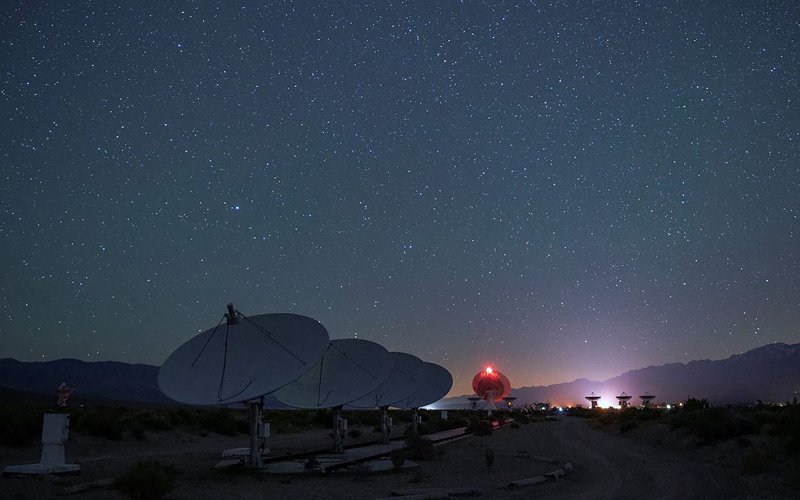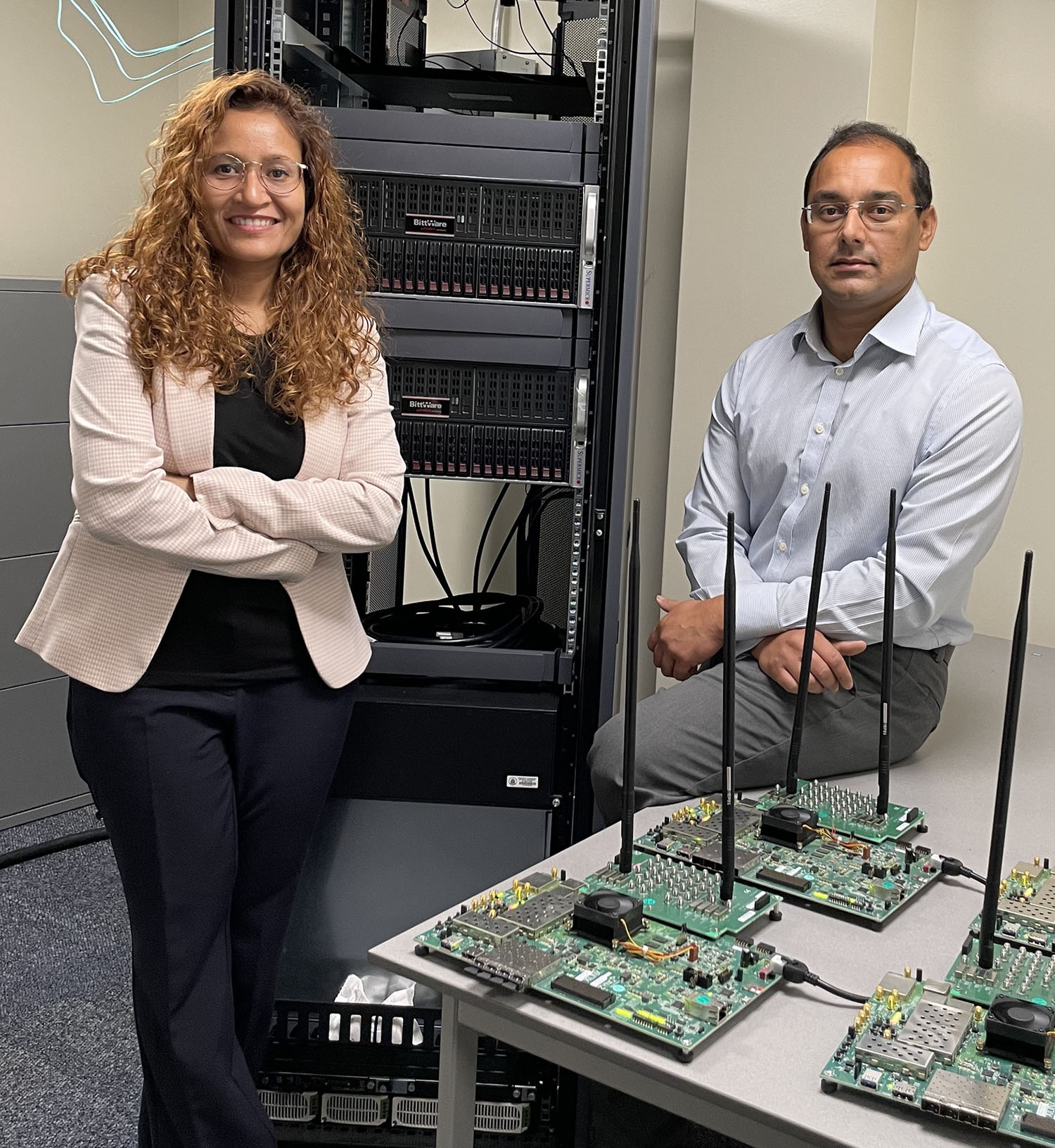Researchers Aim to Improve Coexistence Between Radio Astronomy, Wireless Networks

ALBANY, N.Y. (Sept. 30, 2021) – Radio waves — a type of electromagnetic radiation that is longer in wavelength than infrared light and can carry information over vast distances — have been used as a vehicle for communication for more than a century. Radio waves have also been detected in space, including from our sun, planets and beyond our solar system that are essential to study the evolution of our cosmos.
While radio frequency transmissions have long been governed by the International Telecommunications Union, the growth of wireless cellular networks in the 21st century has created substantial congestion along the radio frequency spectrum.
A new project led by UAlbany researchers Aveek Dutta and Dola Saha aims to enhance coexistence in shared frequency bands between wireless cellular networks and passive radio telescopes.
The project, “Collaborative Interference Cancellation for Radio Astronomy,” supported by a $635,901 grant from the National Science Foundation, also involves researchers at the Deep Synoptic Array telescope at the Owens Valley Radio Observatory — part of the California Institute of Technology.
“Our project aims to address challenges created by growing congestion of the radio frequency spectrum,” said Dutta, principal investigator, and assistant professor of Electrical and Computer Engineering (ECE) at UAlbany’s College of Engineering and Applied Sciences (CEAS). “If successful, it will improve radio telescope capability by reducing interference problems, as well as improve wireless networks by reinforcing the high bandwidth and ubiquitous connectivity needed for continued growth in the benefits of telecommunications.”

Interference problems between communications and radio telescopes have existed for a long time. One approach studied to overcome them has been active interference cancellation, in which the telescope receiver estimates the interfering communications signal then subtracts it from the astronomical measurement to expose the desired information.
Most prior work on active cancellation assumes no cooperation from the cellular networks; this work studies how the telescope and cellular network could work together to improve cancellation performance.
“While previous research usually measured the interfering signals at the telescope site, our project measures the interfering signals at their transmission location,” said Saha, co-principal investigator and assistant professor at CEAS. “Our work characterizes the interference in the digital domain of the transmitter — these attributes of the approach give a clearer picture of the interfering signals at much less cost, but also create challenges that the project will seek to overcome.”
“CEAS faculty continue to expand their partnerships and the scope of their investigations, in keeping with our mission of ‘Science in Service to Society’,” said Kim L. Boyer, Dean of the College of Engineering and Applied Sciences. “The work of Profs. Dutta and Saha will, of course, improve imaging conditions for researchers in radioastronomy. But the implications of their work go well beyond to the intelligent mitigation of electromagnetic interference in a wide array of domains, promising improved wireless connectivity and spectral efficiency everywhere.”
Dutta and Saha’s research will focus on active interference cancellation at the telescope supported by bidirectional collaboration between the telescope and neighboring cellular networks.
Key aspects include:
- Characterize cellular system signals using software running inside the cellular base stations that analyzes the digital representation of the transmissions
- Decompose the cellular signals at the base stations into an orthogonal stochastic component representation employing a neural network architecture for computational efficiency
- Intelligently aggregate information about multiple emitters in the cellular network using topology-aware distributed learning
- Perform the same decomposition on the astronomical signal at the telescope then combine it with the aggregated information about the cellular signals to cancel the interference
- Use continuous quantitative feedback from the cancellation algorithms at the telescope to the cellular network to optimize the performance of the decomposition and aggregation algorithms
The research will be validated with a prototype deployment of the interference measurement and cancellation apparatus at the Deep Synoptic Array telescope (DSA-110) at the Owens Valley Radio Observatory, operated by Caltech.




